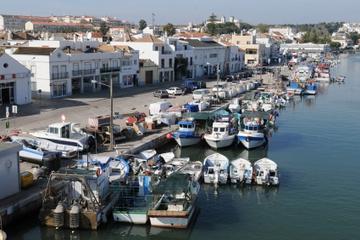
Tavira’s origin is one of the oldest in all of Portugal, as archaeological evidence suggests it was first settled in 2,000 B.C.E. Its history is peopled with the mysterious Celtic tribe of Tartessos, the Phoenicians, the Romans, the Moors and finally Christian Portuguese. While there are some remains of all of these previous inhabitants, much of the city’s buildings were completely leveled in 1755.
Since then, however, the town has been rebuilt. Its cathedral, the Misericórdia, is but one of 37 churches, giving it the sobriquet Town of Churches. Other famous churches in Tavira include Santa Maria do Castelo, which was built on the site of a mosque. It also harbors the tombs of Dom Paio Peres Correia and his seven faithful Knights. These knights were murdered by Moors despite a tenuous truce, which spurred Dom Correia to take the town back.
Tavira’s economy used to be based on fishing, but in recent years, tuna migratory patterns have changed and sullied the fortunes of the town’s fleet. Tourism now fills the economic gap, and the town is becoming a popular golf destination. Sun-seekers come here, too, in order to enjoy Ilha de Tavira, a sandbar beach accessible by ferry boat. Like Tavira, the surrounding towns have comparable beaches, and there is also Slide and Splash Aquatic Park. Since tourism has become so integral to these communities’ economic health, English is becoming more and more prevalent.
Despite its reliance on tourism, Tavira maintains a relaxed air about it. Where its more festive neighbors' bars and cafes are where the action is, Tavira's Praça da República marketplace is the town's social core. Bordered by a city park and covered market stalls, the Praça da República is also a great place to get a meal or coffee as street cafes can be found among the vendors' stalls and shops.